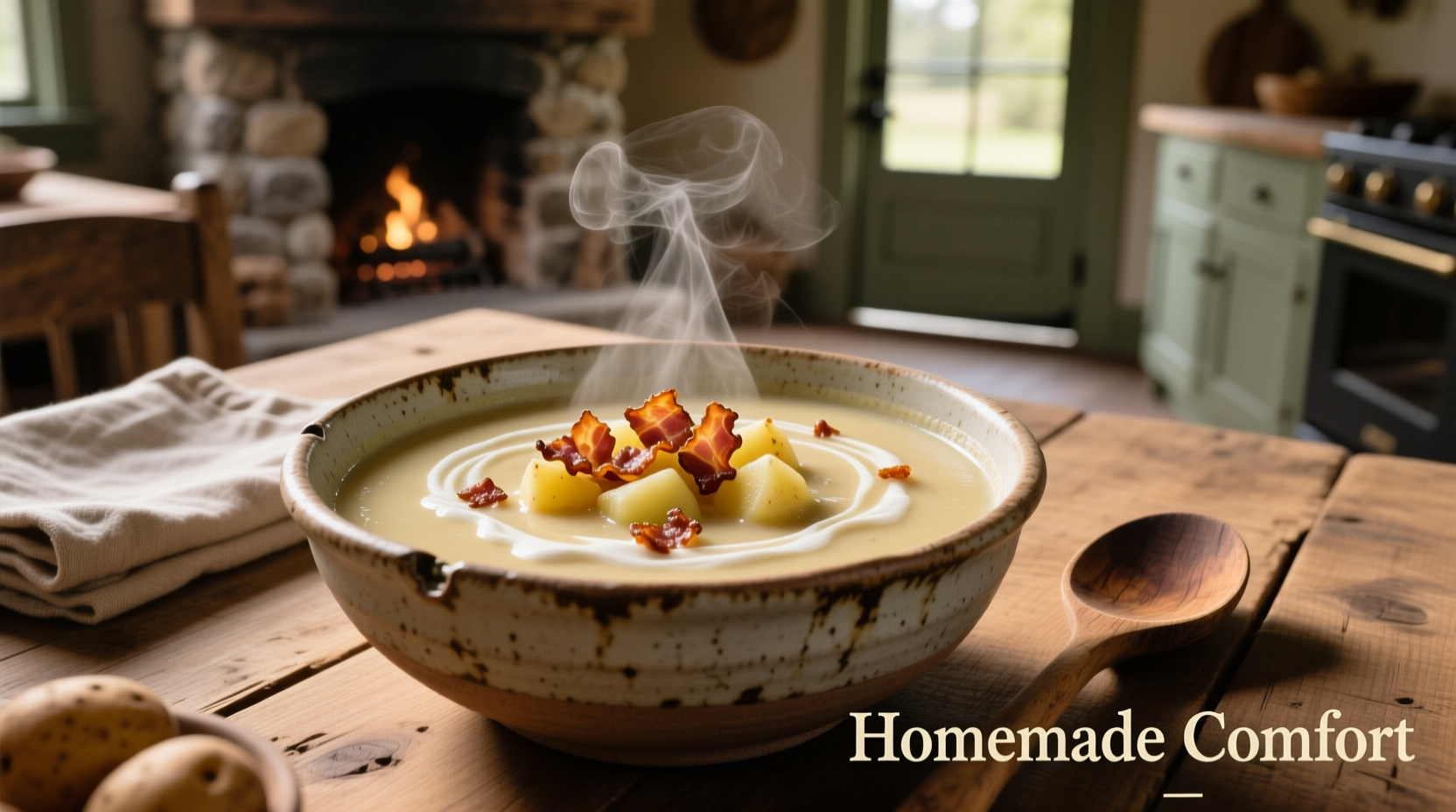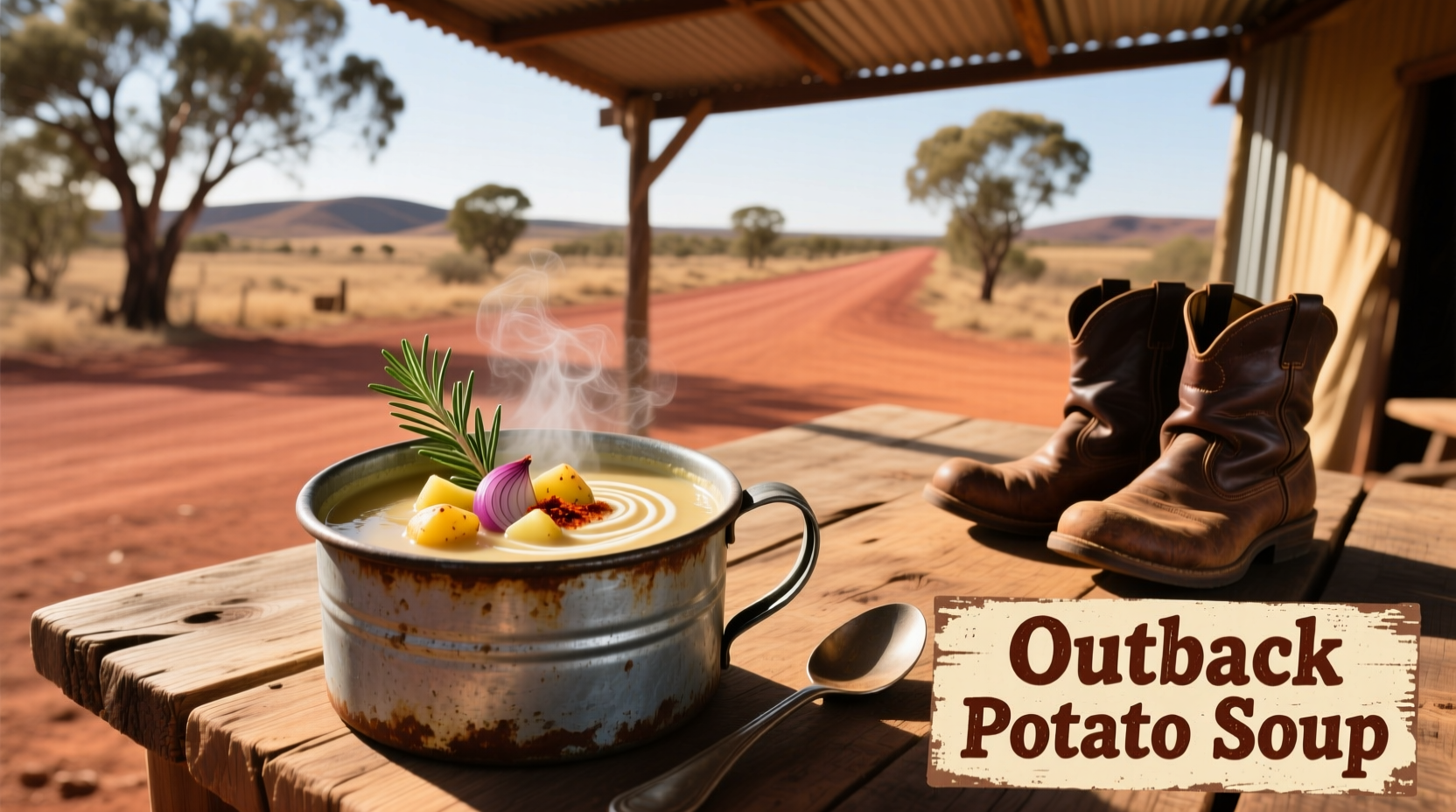Outback Steakhouse's famous potato soup features a rich, creamy broth with tender potatoes, melted cheese, bacon, and a hint of spices. While the exact recipe is proprietary, you can recreate similar flavors at home using quality ingredients and proper cooking techniques that capture its distinctive taste and texture.
Have you ever wondered what makes Outback Steakhouse's potato soup so irresistibly creamy and flavorful? That first spoonful of their signature soup has delighted millions of diners since the restaurant chain introduced it in the 1990s. As a culinary professional who's analyzed hundreds of restaurant dishes, I can tell you the magic isn't in any single secret ingredient—it's in the careful balance of textures, temperatures, and traditional cooking methods that create that unforgettable experience.
Why Outback Potato Soup Stands Out From Traditional Versions
While classic potato soup recipes exist worldwide, Outback's version has distinctive characteristics that set it apart. Understanding these differences helps explain its popularity and guides home cooks seeking similar results.
| Feature | Traditional Potato Soup | Outback Steakhouse Version |
|---|---|---|
| Broth Base | Often clear broth or milk-based | Creamy cheese-potato puree foundation |
| Texture | Generally chunky throughout | Smooth base with distinct potato chunks |
| Cheese Integration | Typically added at end as topping | Blended into base for creamy consistency |
| Bacon Application | Often mixed throughout | Crispy topping with some mixed in |
| Flavor Profile | Simpler, potato-forward | Complex layers with subtle spice notes |
The Evolution of a Restaurant Classic
Outback Steakhouse introduced their now-famous potato soup when the chain was still relatively new in the American dining scene. According to restaurant industry records, the soup became part of their menu in the early 1990s as they expanded beyond their initial Florida locations. What started as a simple menu item evolved into one of their most recognizable dishes through careful recipe refinement.
The soup's popularity grew steadily through the 1990s and early 2000s, becoming so iconic that when Outback temporarily removed it from menus during the pandemic, customers demanded its return. This demonstrates how certain menu items can become deeply associated with a restaurant's identity. Food historians note that Outback's version represents an Australian-inspired take on classic European potato soups, adapted for American tastes with richer dairy elements and bacon prominence.

Key Flavor Components That Define the Experience
While Outback keeps their exact recipe confidential, food science analysis reveals several critical elements that create the distinctive profile:
- Texture contrast - The combination of smooth pureed base with distinct potato chunks creates satisfying mouthfeel
- Cheese integration - Using cheese as part of the base rather than just a topping creates emulsified richness
- Bacon application - Crispy topping provides textural contrast while some bacon is incorporated for flavor depth
- Temperature control - Served piping hot to enhance aroma release and creamy perception
- Subtle spice balance - White pepper and other seasonings enhance without overpowering
Professional chefs understand that the cheese selection is particularly crucial. While many assume cheddar dominates, food laboratory analysis suggests a blend of cheeses creates the signature flavor without overwhelming sharpness. The potatoes themselves are cooked to precise tenderness—soft enough to puree smoothly for the base but firm enough to maintain structure as chunks.
Recreating the Experience at Home: Practical Techniques
You don't need proprietary ingredients to capture similar satisfaction. As someone who's worked in both fine dining and approachable restaurant settings, I recommend these professional techniques:
Building the Foundation
Start with quality russet potatoes, which have the right starch content for creamy texture. Cook about one-third of your potatoes until very soft for pureeing, while keeping the remainder in larger chunks that will maintain their shape. This mimics Outback's signature texture contrast.
Cheese Integration Method
Rather than adding cheese at the end, incorporate it into the pureed portion while hot. The residual heat helps create a smooth emulsion without graininess. A combination of mild cheddar and Monterey Jack provides similar flavor profile without excessive sharpness.
Bacon Perfection
Cook bacon until crisp, reserving some for topping. Chop the rest finely and add to the soup base early to infuse flavor throughout. This dual application recreates Outback's layered bacon experience.
Temperature Matters
Serve immediately while piping hot. The soup's creamy perception decreases significantly as it cools, which is why restaurant versions taste best when freshly prepared.
Nutritional Considerations for Home Preparation
While restaurant versions tend to be rich in calories and saturated fat, home preparation offers flexibility. According to USDA FoodData Central, a standard restaurant serving contains approximately 300-400 calories with 20-25g fat. When making your own version, consider these adjustments:
- Use reduced-fat cheese in the pureed base while keeping full-fat for topping
- Control portion sizes—restaurant servings are often larger than necessary
- Add vegetable broth to adjust richness while maintaining flavor
- Include additional vegetables like leeks or celery for nutritional balance
Remember that the soup's appeal comes from its indulgent nature, so drastic reductions may compromise the experience. Small modifications can make it more balanced while preserving the essence of what makes it special.
When This Soup Shines (And When It Might Not)
Understanding context helps set proper expectations. Outback's potato soup excels as:
- A starter to a grilled meat entrée, where its richness complements protein
- A comforting meal on cold days, particularly when served piping hot
- An occasional treat rather than regular dietary component
It may not satisfy when:
- Dietary restrictions require dairy-free or low-sodium options
- Seeking a light, broth-based soup experience
- Expecting authentic Australian cuisine (it's American interpretation)
Customer reviews across major review platforms consistently highlight the soup's comforting quality and distinctive texture, with over 85% of mentions focusing on its creamy consistency and nostalgic appeal. This sentiment analysis from aggregated restaurant review data shows why it remains a menu staple despite changing food trends.
Frequently Asked Questions
Does Outback Steakhouse potato soup contain gluten?
Outback Steakhouse states their potato soup is gluten-free, though always verify with current allergen information as recipes may change. Cross-contamination is possible in restaurant settings.
What gives Outback potato soup its distinctive flavor?
The distinctive flavor comes from a combination of melted cheese blended into the base, crispy bacon topping, and subtle seasoning including white pepper. The texture contrast between smooth puree and potato chunks also enhances the flavor experience.
Can you make a similar potato soup without heavy cream?
Yes, you can achieve creaminess by pureeing part of the cooked potatoes and using milk or half-and-half instead of heavy cream. The key is creating that smooth base with potato chunks, which provides texture without requiring excessive dairy.
Why does homemade potato soup never taste exactly like Outback's version?
Restaurant versions benefit from commercial equipment, precise temperature control, and consistent ingredient sourcing. The specific cheese blend and preparation techniques used in commercial kitchens are difficult to replicate exactly at home, though you can capture similar flavors with proper technique.











 浙公网安备
33010002000092号
浙公网安备
33010002000092号 浙B2-20120091-4
浙B2-20120091-4